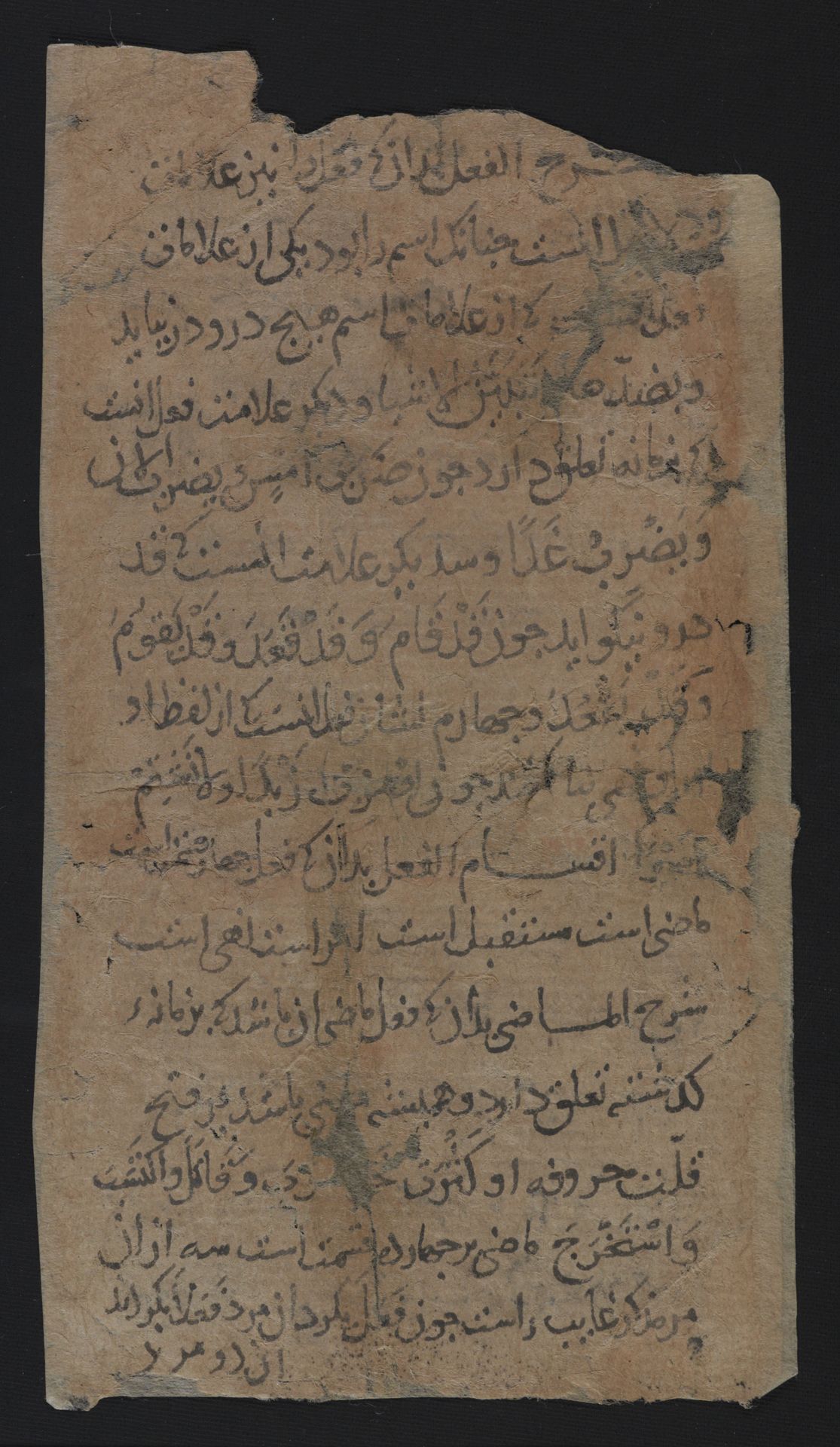Details
Download
Download IEDC Data
You are about to download data for the current text from the IEDC database.
To start the download, please click on your desired format below.
Note: it can take up to several minutes to download your data, so please wait whilst it processes
- Microsoft Word (.docx)
- JSON
Download started
Content
This is a page from a grammatical primer of Arabic written in Persian, discussing basic features of verbs and nouns. It lists numerous examples for different grammatical categories, which are organised within a category by lexical properties, such as body parts.
Dates
(Dates unknown)
Details
Ms.Heb.8333.187
Silver (given following internal peer review)
Physical Description
Incomplete (top of recto missing), multiple lacunae, severe damage to the paper. Heavily conserved by the NLI. Black ink; verso used
People
Publications
Related Shelfmarks
IEDC Data
1288
21/07/2025
12/11/2025
Citations
Arezou Azad
Mateen Arghandehpour, Nabi Saqee, Nadia Vidro
The transcription and translation are the original work of the IEDC Team (as yet unpublished in peer-review print)
Images of this Text displayed on this web page are provided by National Library of Israel.
© National Library of Israel, All rights reserved.
If you wish to reproduce these images please contact National Library of Israel.
© National Library of Israel, All rights reserved.
If you wish to reproduce these images please contact National Library of Israel.
Contact
invisible_east@conted.ox.ac.uk (Please include the above permalink when contacting the editorial team about this Text)

